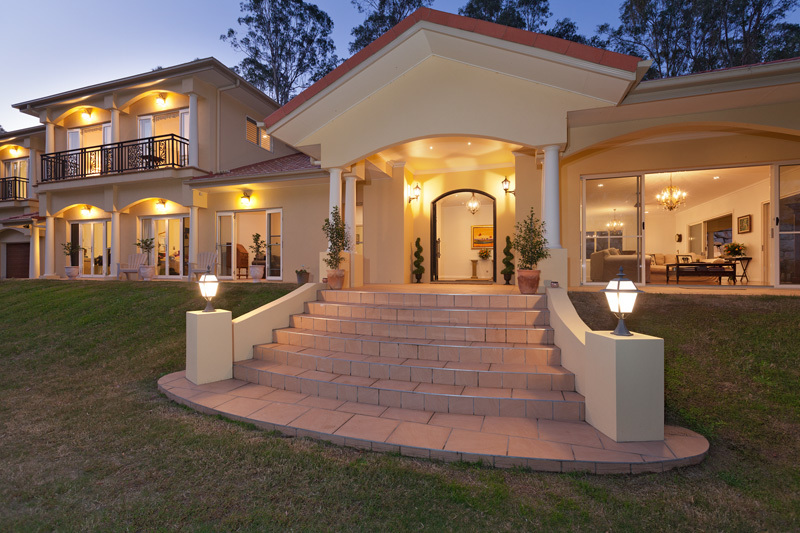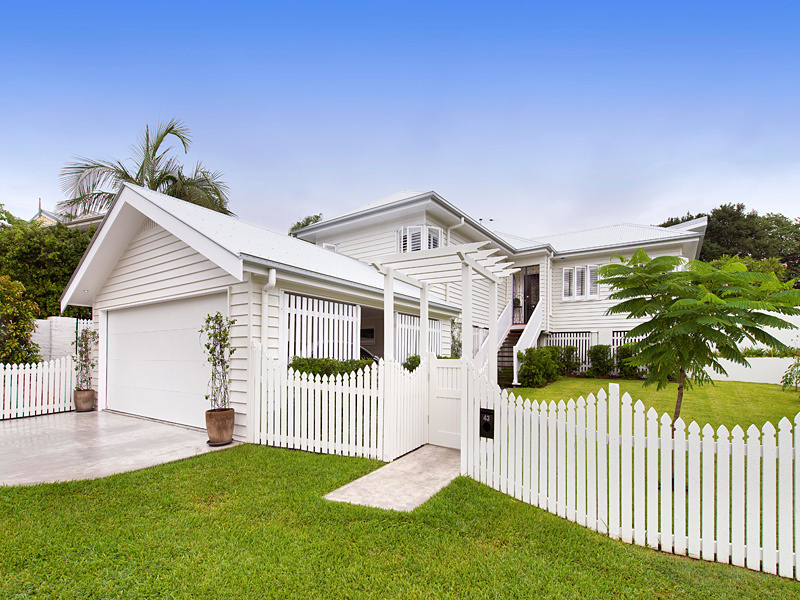When presenting a home at an open for inspection you have just seven seconds to make a great first impression on potential buyers. Here we explain how the three entry phases help buyers move through those precious first seven seconds with ease.
There are three vital, and often overlooked, entry points when presenting a home for sale. Each is equally important and has a unique purpose in helping buyers decide if a home is right for them. Each entry needs to be presented for maximum impact.

Behavioural change from street to home
In the timeless series, A Pattern Language, Christopher Alexander describes how the experience of entering a building influences the way you feel once inside it. In architectural terms he explains how the gentler the transition between the home and the street, the more the inside of the home will feel like a safe ‘inner sanctum’.
Of course, the perfect transition from the street to front entry is not always achievable, but you can soften the journey for prospective home buyers by understanding the stages of the transition, or, as we’ve called it, the ‘three entrances’.
You just have to look at your children, or those of others, to know that street behaviour and home behaviour can be vastly different. As adults, we naturally look forward to the transition from the more guarded ‘street’ mood into an intimate and relaxed ‘home’ mood.
The gentle transition
As an agent you’re trying to achieve as gentle a transition as possible from street (distance) to interior (intimate) mode for prospective buyers, as you invite them into what you hope will be their new home.
The ideal transition goes something like this:
-
First entrance– Your buyer’s first glimpse is viewing the home through ‘street’ eyes as they approach by car.
-
Second entrance– As the buyer steps onto the property from street level and moves toward the front door, their street mood softens.
-
Third entrance– That private moment, as the buyer approaches the front door where they can no longer be seen from the street, completes the transition.

The reality is that this stunning Art Deco home is on a major arterial road near an international airport. It’s noisy 24/7. Obviously the architects of this 1920s stunner understood the psychological importance of the three entrances.
The importance of the transition- Why is it so important to buyers?
Studies show that a front garden or courtyard gives home owners a sense of comfort and privacy. This may explain why householders appreciate their front garden whilst rarely spending time maintaining the back. It reassures them of their privacy. The three entrances reinforce the move from public domain to private space.
By the time buyers have entered the front door, you want them to be relaxed enough to connect immediately with your listing.
Jan Hogarth, an 18-year veteran of house and renovation architecture and Director of Placemate Architects in Brisbane, agrees ‘entering a home is a journey into a private world’.
‘When a place feels inviting and welcoming, it has this pattern of three entrances to change the scale with colour; texture; height; change of direction; and focus. It slows the pace of your steps and creates a moment before you arrive at the door…Architects use it all the time,’ she says.
A warm welcome in seconds
The actual physical transition can be made in many ways, or combinations, and the benefits of each are far more complex than this brief list can convey. The transitions can include:
-
Change of enclosure i.e. gateway or fence,
-
changing the light i.e. sensor light,
-
introducing new sounds i.e. doorbell or knocker,
-
changing the direction of the path i.e. a curve or corner,
-
change of ground surface i.e. from concrete to lawn or pavers,
-
change of level i.e. step up or down and
-
most of all, providing a glimpse of life – a garden or view.
It seems harder to create an attractive transition when the front door of your listing opens onto the street. The change can be abrupt without allowing time for buyers to transition from street to home mode, but it can be done…

In the case of this red door, the stages of the transition would look more like:
-
First entrance– Stays the same as your buyer glimpses the front door from the street.
-
Second entrance– As the buyer steps from street level onto the front step, a change of mood is apparent.
-
Third entrance– That private moment, as the front door opens and buyer glimpses both the interior and exterior from a unique perspective.
In the red door example, the entry cleverly delivers colour, light, life, a change of level and texture to quickly create a successful transition. Here’s how:
Colour– While the red door may not be everyone’s thing, it’s a very clever choice as a fast transition colour. Why? In many cultures the red door symbolises protection, positive energy and abundance.
Light– The reflective glass in the front door captures light from the street and reflects it back to the viewer. It also creates space and suggests hidden depths within.
Life– The plants and trellises are a feel good feature that break up the harshness of the brick wall and say ‘welcome’.
Level– A simple step up and you’ve ‘arrived’ at the front door. As you wait for the door to open, you no longer feel the discomfort of being at street level, you’re safely in a transition space.
Texture– A door mat, be it funky or simple, changes the texture of the ground area as you leave the street and enter the home.
The way in which we arrive at and leave a house is a significant, if often overlooked, factor in real estate. The transition from street to home influences our psychological and general wellbeing, and that of clients.
For a home sale, a successful transition will invite potential buyers into the home and impact how they feel once inside. To the home buyer it hints at the potential for privacy and safety within the walls of the home.
The three entrances signal the crucial moments of the first and last impression of your listings. For selling success, be thoughtful in the presentation of the main entry and exit points of the property.






Tracey – thanks for writing this article, I had not even contemplated the importance of transitioning from the street to the front door, but it makes perfect sense now as to why the front of my house lacks that feeling.